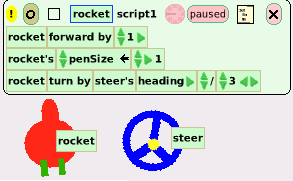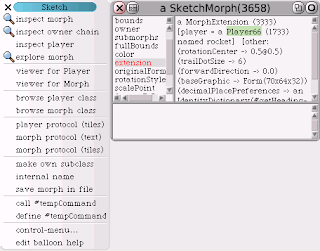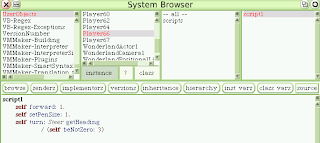What is the effect of technology, work, play and the media in general on our intelligence?
Are we becoming smarter or dumber?
Are we living in some sort of Huxleyian "Brave New World" fog, endlessly distracted from the vital issues of our time? A western form of brainwashing? Contrast this with the Marxist view that the capitalist system creates its own gravediggers. Which is correct?
Or, are we becoming smarter but feel unfulfilled because we sense our lives could be much better?
Were people smarter when print was the dominant medium? (Postman and Gatto seem to be saying this)
What effects do TV, video games and the internet have on intelligence?
Is there a general upward trend in intelligence irrespective of media?
Are we getting smarter but still not utilising our full potential, that many are missing out on really important "higher learning" (whatever that is)?
Is the
western canon important. Are there important texts or concepts that an educated person ought to read or develop? (Kay has articulated a list of "non universals")
Does the way in which work is organised make us less or more intelligent? (Braverman argued less; Adler argued more)
Are political influences, such as the politics of inclusion, making us dumber? (Furedi argues this)
"Dumbing down" is a popular phrase. Some people argue that things as varied as TV, playing video games, School and going to work dumb you down. But others argue that TV and video games can make you smarter. Some even argue that School can make you smarter but that is very uncool :-)
Anti elitism and egalitarianism are popular sentiments. But do these sentiments mask anti-intellectualism?
I'd like to explore these questions:
1. the effect of broad media changes on our intelligence
2. the effect of personal computing on our intelligence
3. the effect of the internet and "web2.0" on our intelligence
4. the effect of School on our intelligence
5. the effect of work on our intelligence
6. the effect of the politics of inclusion on our intelligence
READING LIST(I might come back and update and / or annotate this from time to time)
I am currently reading some of this material and would be interested in the opinions of others who are reading it.
1. the effect of broad media changes on our intelligencePostman, Neil. Amusing Ourselves to Death: Public Discourse in the Age of Show Business (1985)
116 reviewsBauerlein, Mark. The Dumbest Generation: How the Digital Age Stupefies Young Americans and Jeopardizes Our Future (Or, Don't Trust Anyone Under 30). (
amazon)
Recommended by Mark Nichols in this substantial blog:
Solid ThinkingGee, James Paul. What Video Games Have to Teach Us About Learning and Literacy (2003)
26 reviewsJohnson, Steven. Everything Bad is Good for You: How Today's Popular Culture is Actually Making Us Smarter (2005)
70 reviews2. the effect of personal computing on our intelligenceKay, Alan.
Some annotated references"Point of view is worth 80 IQ points"
explanation: At PARC we had a slogan: "
Point of view is worth 80 IQ points." It was based on a few things from the past like how smart you had to be in Roman times to multiply two numbers together; only geniuses did it. We haven't gotten any smarter, we've just changed our representation system. We think better generally by inventing better representations; that's something that we as computer scientists recognize as one of the main things that we try to do.
another explanation: what is special about the computer is analogous to and an advance on what was special about writing and then printing. It's not about automating past forms that has the big impact, but as McLuhan pointed out, when you are able to change the nature of representation and argumentation, those who learn these new ways will wind up to be qualtitatively different and better thinkers, and this will (usually) help advance our limited conceptions of civilization (
source)
Some recent discussion about non universals and powerful ideas
herePapert, Seymour. Mindstorms: Children, Computers and Powerful Ideas (1980)
my reviewPapert, Seymour. The Children's Machine: Rethinking School in the Age of the Computer (1993)
Maxwell, John. Tracing the Dynabook: A Study of Technocultural Transformations (2006)
link to pdf3. the effect of the internet and web2.0 on our intelligenceKeen, Andrew. The Cult of the Amateur: How Today's Internet is Killing Our Culture (2007)
50 reviewsIs Google Making Us Stupid? Nicholas Carr (argues that net use works against deep, reflective reading; also discusses hisorical parallels)
Weinberger, David. Everything is Miscellaneous: The Power of the New Digital Disorder
video of a debate between Weinberger and Keen
Clay Shirky is my favourite informed commentator on these questions at the
Many2Many site. For example,
Andrew Keen: Rescuing 'Luddite' from the Luddites, is a critique of Keen
Friedman, Thomas L. The World is Flat: A Brief History of the Twenty-First Century (2005)
reviewsLocke, Chris; Searls, Doc; Weinberger, David. The ClueTrain Manifesto: The End of Business as Usual
95 theses4. the effects of School on our intelligenceGatto, John Taylor. Dumbing Us Down: The Hidden Curriculum of Compulsory Schooling (1992). Gatto also has a web site,
Challenging the Myths of Modern Schoolingthe "outcomes based education literature
Berlach, Richard G., Outcomes-Based Education and The Death of Knowledge
pdfKillen, Roy. Outcomes-Based Education: Principles and Possibilities
html5. the effect of work on our intelligenceBraverman, Harry. Labor and Monopoly Capital (1974)
Adler, Paul. Technology and the Future of the Firm: A Schumpeterian Research Agenda (1985)
Langer, Albert. Technology and the Future of Work (1985)
Adler, Paul. Technology and Us (1986)
Adler, Paul. Technology and the Future of Work (1992)
descriptionPostrel, Virginia. The Future and Its Enemies (1998)
excerpts reviews
6. the effect of the politics of inclusion on our intelligenceFuredi, Frank. Where Have All The Intellectuals Gone?: Confronting 21st Century Philistinism (2004)
reviews











